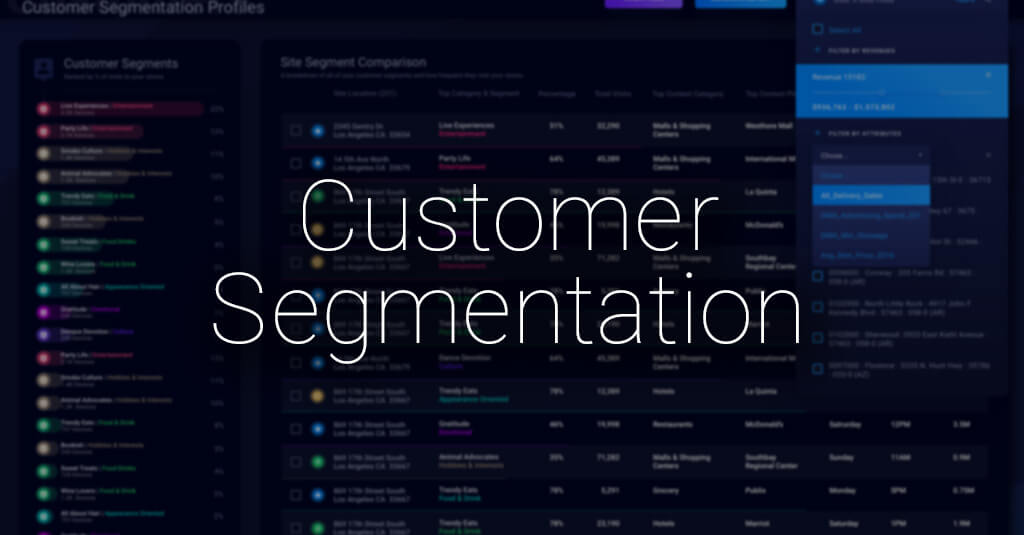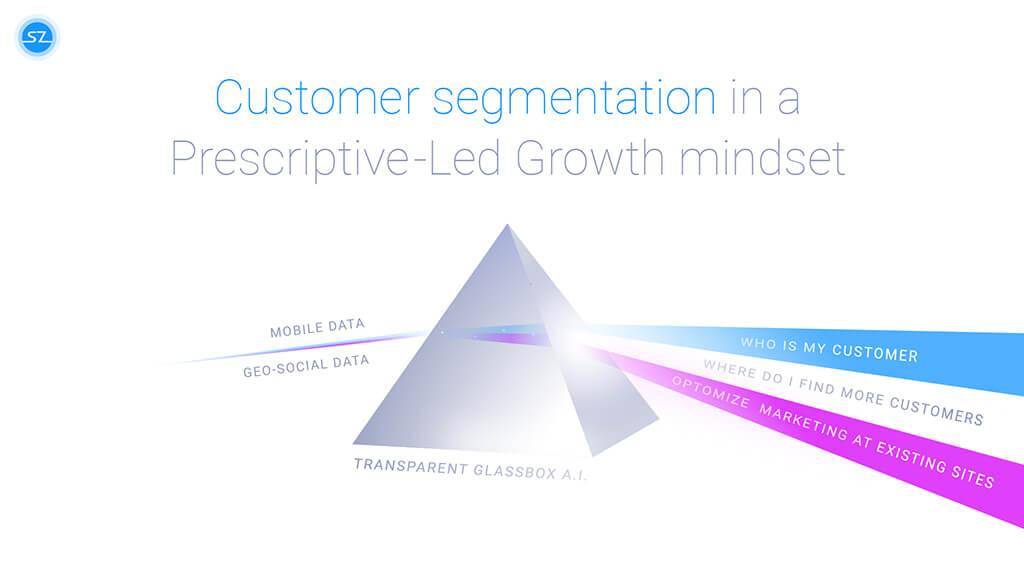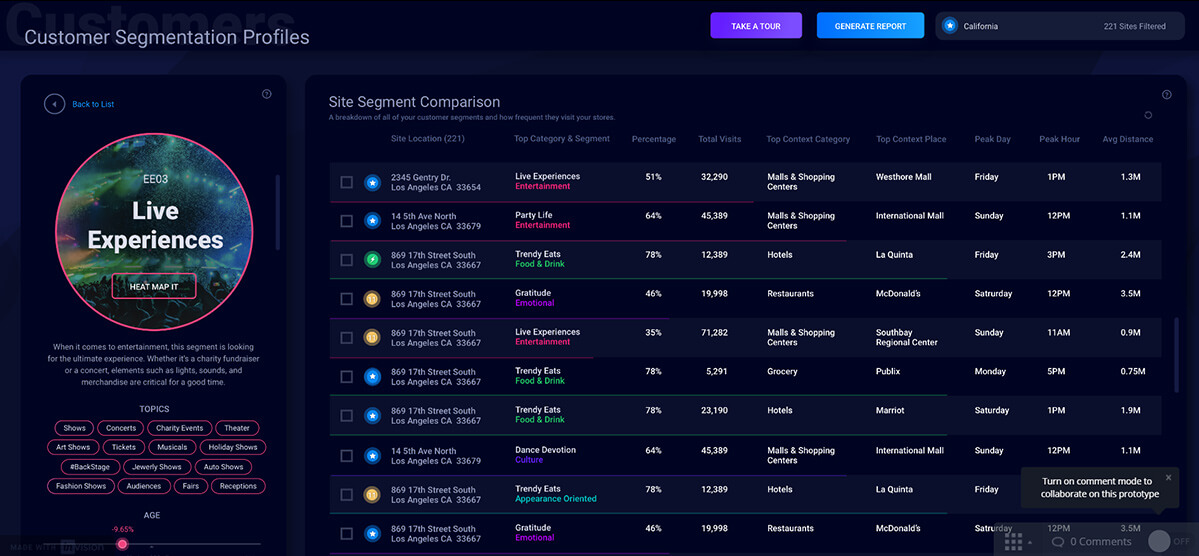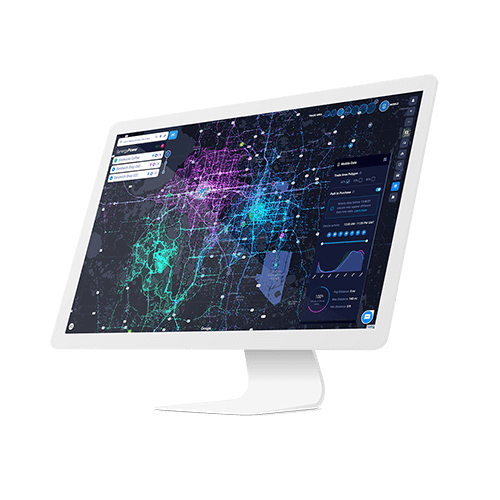How customer segmentation can drive better location-based decision-making
In the retail revolution, outdated customer segmentation tools are holding brands back. While census data and predictive analytics worked well until recently, they’re no longer the gold standard in location intelligence; this is why the news is riddled with store-closure headlines of top brands like Family Dollar, Sears, and Gap. So what’s next? A.I. powered decision-making solutions. One of the many ways in which A.I. can help brands thrive is by enhancing customer segmentation so real estate teams can unearth deep insights.

The shift from predictive to prescriptive location intelligence is already well underway. Here’s how the two go-to-market strategies differ:
Predictive- vs. Prescriptive-Led Growth
Before we dive into how A.I. and machine learning are transforming customer segmentation, let’s first discuss what came before this new technology and why that outdated methodology limits brands from growing in today’s changing marketplace.
For the last 10–15 years, predictive consulting has helped brands identify locations with little to no certainty, but the context it provided was the best available at the time. Brands would hire consulting firms that used census data to determine trade areas and the revenue potential of new locations.
Drawbacks of this predictive modeling approach
- It’s slow, taking 12–50 weeks for consulting firms to complete.
- There’s a large chance for errors since the regression-based model leverages outdated information.
- There’s a lack of transparency because the firm owns and controls the process and uses static data sets.
Benefits of Prescriptive-Led Growth
Prescriptive-Led Growth (PLG) involves using A.I. to prescribe location-based decisions to unique brands for market planning. Instead of using outdated data based on time-consuming predictive modeling, PLG methodology harnesses millions of data points in real-time, with a dynamic ability to adjust attributes at any point to provide customers with actionable insights.
Simply put, PLG harnesses location intelligence data in innovative ways to prescribe better outcomes more efficiently — inminutes instead of weeks or months.
SiteZeus is pioneering PLG with the next generation of customer segmentation, which ties customers’ mobile location data to their social behavior, giving brands access to first-of-its-kind contextual customer segmentation.
For an in-depth overview of how your brand can lead the retail evolution by adopting Prescriptive-Led Growth, watch our webinar.
A new age of customer segmentation
Fast-growing and emerging brands are already adopting PLG to gain more accurate and holistic insights into customer behavior and preferences. SiteZeus’ new customer segmentation solution helps brands understand their customers more contextually than ever before.
Brands can now learn
- who their customer is by segmentation of store type, region, or characteristic;
- where more of those key customers are located; and
- how to optimize marketing efforts at existing sites based on untapped customer behaviors.

Customer segmentation is the marriage of 8 billion social media conversations tied to over 100 million mobile devices in the United States. This provides SiteZeus users with contextual information that helps them select better locations.
Use case: Next-gen customer segmentation
Imagine you’re trying to understand the top customer segments that visit your restaurant, which caters to an audience of individuals between the ages of 25 and 38 who are interested in experiential dining and attending music concerts. Using the geosocial segmentation feature in SiteZeus, you can easily filter 8 billion conversations to find those that resonate with your concept. Then, using data from Near, you can identify the exact trade area travel paths of those ideal customers and understand where users were two hours before and after visiting your site. Here’s what those filters would deliver:

The bottom line: Customer segmentation is evolving
A.I.-driven customer segmentation is useful for several reasons. It means you can rely on new, relevant data instead of ancient census information. And instead of guessing where your customers might be traveling, you can know for sure exactly where they are thanks to geolocation technology leveraging mobile phones. This allows your brand to
- gain a competitive advantage,
- select better future locations,
- optimize existing locations, and
- effectively plan for growth when market planning.
For a quick tutorial of this functionality, watch this short demo:
Recommended Posts

